 | E-mail to Birds Korea |
 | KWBS |
in the Region
 | The Oriental Bird Club |
 | BirdLife International (Asia) |
December
Periods of intense cold alternate with milder spells. In the coldest winters maxima are often below freezing; in milder winters maxima often reach 10°C in Seoul. A few lingering autumn migrants can still sometimes be found as well as huge numbers of wintering waterbirds.
A great birding month. Saunders’s Gulls are widespread, while very small numbers of Relict Gulls also start to appear at a number of sites, especially in cold winters. Scaly-sided Merganser are back on preferred rives (with at least 140 overwintering in 2012), while numbers of Baikal Teal usually also reach their peak. Tundra Bean Geese are widespread in rice-field areas, and Taiga Beans too can be found in the low thousands especially in the southeast, the mildest part of the mainland. Raptors include good numbers of Cinereous Vulture in the Cheorwon Basin, where they are often joined by White-tailed and the occasional Steller’s Sea Eagle, while cranes (Red-crowned, Hooded, and White-naped), also remain at key sites. Numbers of wintering landbirds vary in number greatly from year to year. Most years, there are large numbers of Brambling and Rustic Bunting (especially towards the north), mixed thrush flocks (including Naumann’s and Dusky Thrushes and the occasional Red-throated Thrush) and occasionally large numbers of Siberian Accentor. Towards the south, species such as White’s and Pale Thrush, Japanese Bush Warbler, Red-flanked Bluetail and Japanese White-eye also remain in reasonable numbers - on Jeju Island and in the far southeast.
Highlights in recent years have included irruptions of Chinese Nuthatch (especially in 2012 / 2013), and multiple records of Sandhill Crane, Siberian Crane and Cackling Goose. National firsts in the past ten years or so have included Grass Owl (2003), Meadow Pipit (2006), and Lesser Black-backed Gull (2008).
Namhansan, December 31
On a hazy and relatively warm last day of 2013, I visited the peaceful hills around Hyeonjeolsa Temple on Namhansan, in Seoul’s southeast. It was a treat to see a variety of birds I don’t get to see on Jeju, such as confiding single-digit numbers of Marsh Tit, Japanese Pygmy Woodpecker, Great Spotted Woodpecker, Eurasian Nuthatch, as well as perhaps a dozen Naumann’sThrush, several Dusky Thrush (with an apparent Dusky x Naumann’s hybrid), and a Goldcrest. Several Great Tit, Varied Tit, Brambling, Large-billed Crow, and an Eastern Buzzard were also seen. Unfortunately I was unable to see a Hazel Grouse, in spite of hearing one.
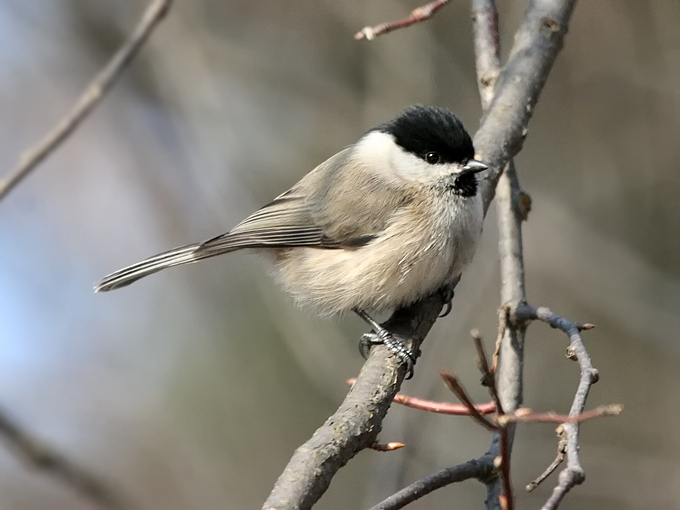
Nakdong Estuary & Junam Reservoirs, December 30
In continuing settled, sunny and mild conditions (with a low of -1C and a high of +8C), a couple of hours at dawn and dusk at the Nakdong Estuary and the remainder of the day at Junam, where a third of the reservoirs’ surface remains unfrozen.
At the Nakdong Estuary, first highlight (lowlight!) before sunrise was an apparent fuscus-type Lesser Black-backed Gull sitting on the water with c.500 other gulls (NM only), Swaro-scoped at c. 150m range. Unfortunately it was seen only for 10 seconds at rest on the water and then through the ‘scope in flight for a further 15 seconds or so as the gull flock flew out of the estuary – and could not be re-found in the evening. There are no images and its identity must remain open to question. At rest, the bird was slightly smaller than Vega Gull, with a more elongated structure, recalling Taimyr Gull. The head showed some streaking on the nape and around the eye. Overall, there was only a very weak contrast between the primaries and the rest of the dark of the upperparts, and it was thus strikingly darker than 3-4 Slaty-backed, six or so Taimyr and c. 40 Black-tailed Gulls in direct comparison. In flight, there was a hint of a small mirror on P10, but the rest of the upperwing (with the exception of the secondary trail) simply looked dark, with no suggestion of a string of pearls or contrasting paler tongues in the primary black. The tail was clean white. The bill showed no obvious dark markings and the legs were not seen. Also in the estuary, in addition to 2000+ large gulls, 1000+ Whooper Swan, two Tundra Swan, two (presumed) Black-faced Spoonbill, between three and ten Swan Geese, 2-3 White-tailed Eagle, 2-3 Hen Harrier and rarest in the Korean context one First Calendar-year Steller’s Sea Eagle, one (NM) or two (JL) Eastern Marsh Harrier and two Relict Gull (one First-winter and one Second-winter).
At the Junam Reservoirs, no sign of the Siberian Chiffchaff found here 2-3 days earlier by Philippe Dubois, but instead excellent views of a diverse range of waterbirds including several hundred “large-end” middendorffi Taiga Bean Geese, five Baikal Teal, 30+ Falcated Duck, one Mandarin, four Swan Geese, 80+ White-naped and two Hooded Cranes. Rarest in the domestic context was a First-winter Mute Swan. The second ID curiosity of the day was provided by a presumed super-bleached immature White-tailed Eagle seen only in flight, initially down to 100m or so. It was poorly-digiscoped (at >1km range) as it started to soar. Unlike the two other White-tailed Eagle which were present – and more importantly unlike many hundreds seen over the years – this super-pale sea-eagle, although it seemed not obviously dissimilar to White-tailed in structure, had a dark head contrasting with an off-white breast and belly; white or off-white axillaries, with white extending across much of the greater coverts on the underwing; off-white back and upperwing coverts; and a tail which was a mix of white and dark, with a darker tail band. Unlike the gull earlier in the day, this distinctive-looking individual should be relatively easy to re-find!

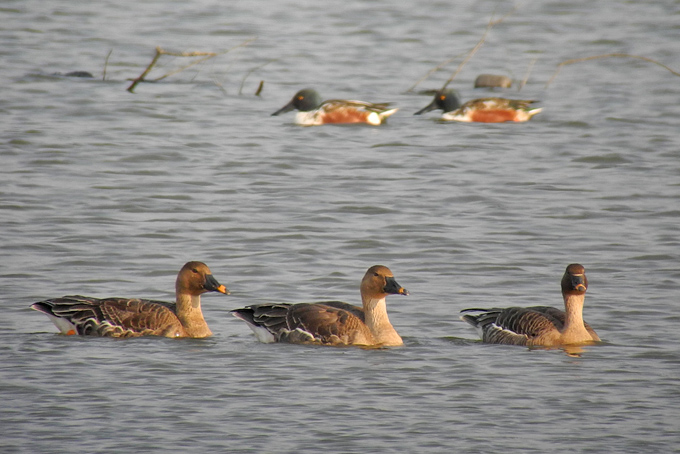

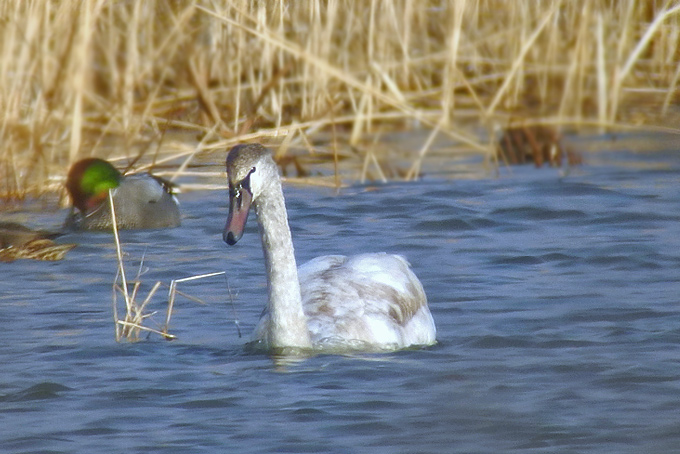

Mokpo, December 30
Today it was quite the same bird-wise on the stream between Samhyang and Yeongsan bridge as for the last couple of days. Only that today 2 Red-breasted Merganser and 2 Great Crested Grebe were additional to the handful Eastern Spotbilled Duck, today again with the Mallard-hybrid seen on 27th, 13 Mallard , 37 Gadwall, c.30 Black-headed Gull, 1 Taimyr Gull, 7 Little Grebe, 2 Eurasian Coot, 1 Little Egret, 1 Grey Heron and 2 White Wagtail.
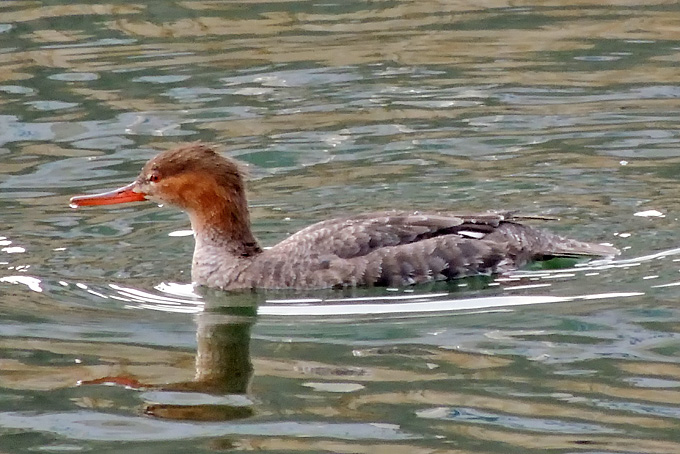
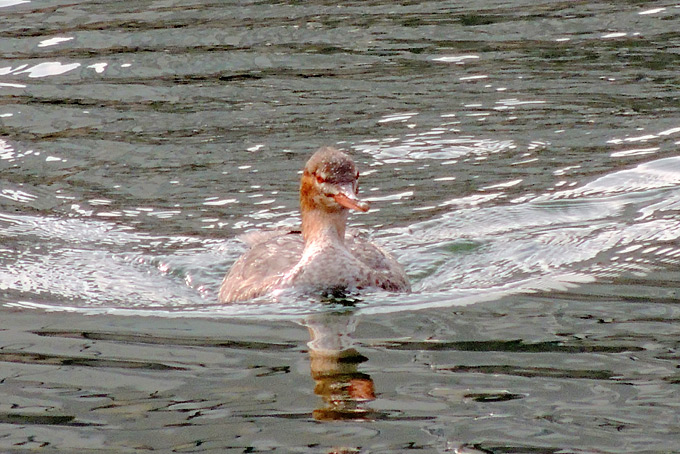

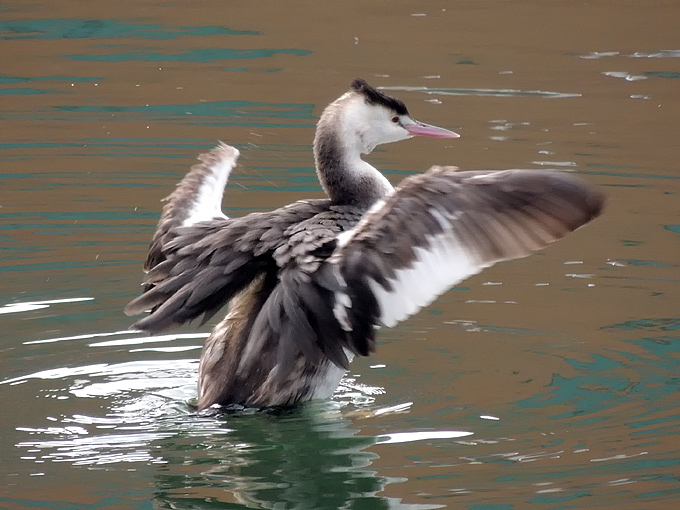
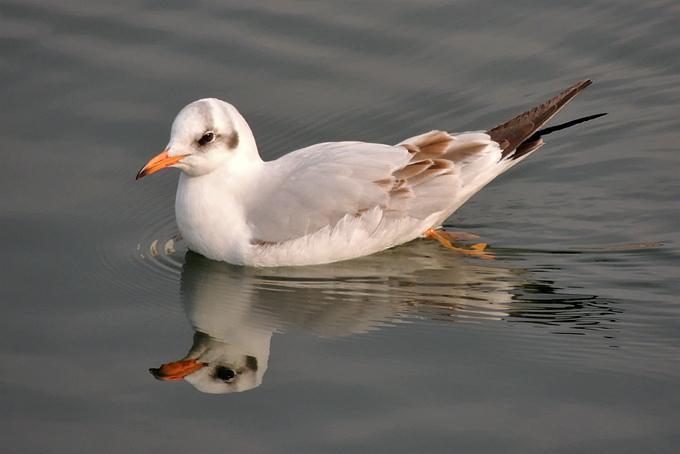


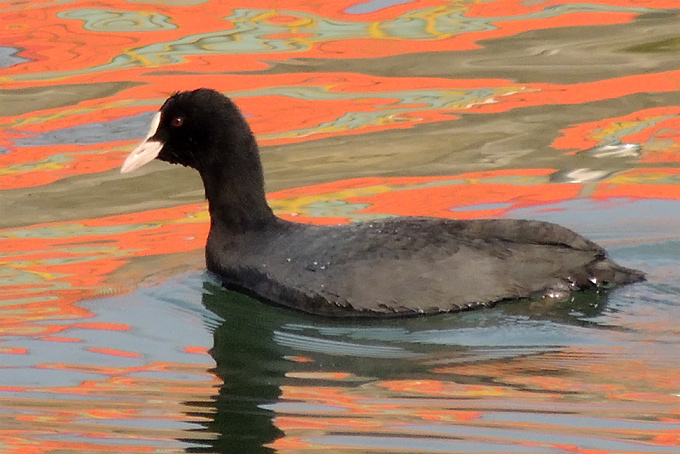
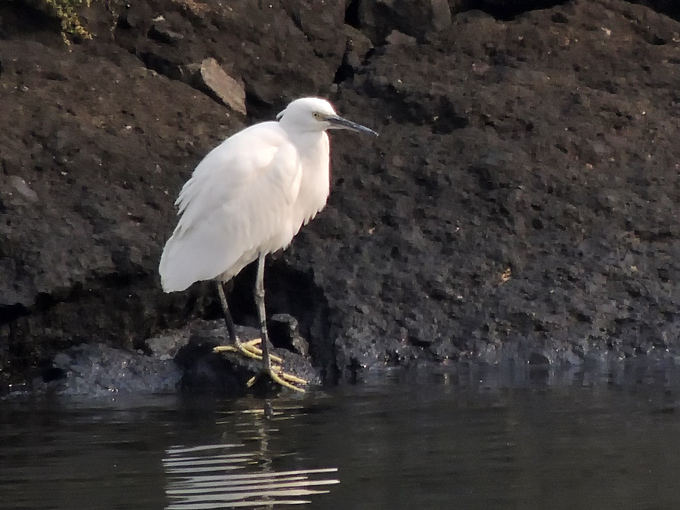
Pohang, December 29
Yesterday, I was birding at Pohang with Mr. Loghry for special gulls. It was relatively faster than the birding at the last year, only two Glaucous Gull were observed… with serveral Taimyr Gulls. We could see some of sea birds also, such as Ancient Murrelets and Loons.
Species List:
- Brant Goose Branta bernicla. One bird observed at the small harbor.
- Gadwall Anas strepera.
- Eurasian Wigeon Anas penelope.
- Mallard Anas platyrhynchos.
- Eastern Spot-billed Duck Anas zonorhyncha.
- Eurasian Teal Anas crecca.
- Red-breasted Merganser Mergus merganser.
- Arctic Loon Gavia arctica.
- Pacific Loon Gavia pacifica. A heavily oiled bird was resting on the concrete side of the harbor.
- Little Grebe Tachybaptus ruficollis.
- Great Crested Grebe Podiceps cri.
- Black-necked Grebe Podiceps nigricollis.
- Grey Heron Ardea cinerea.
- Great Cormorant Phalacrocorax carbo.
- Eastern Buzzard Buteo japonicus.
- Common Kestrel Falco tinnunculus.
- Common Sandpiper Common Sandpiper.
- Sanderling Calidris alba.
- Black-headed Gull Chroicocephalus ridibundus.
- Black-tailed Gull Larus crassirostris.
- Mew Gull Larus canus.
- Glaucous Gull Larus hyperboreus. 2 birds were observed.
- Vega Gull Larus vegae.
- Mongolian Gull Larus mongolicus.
- Slaty-backed Gull Larus schistisagus.
- Taimyr Gull Larus heuglini taimyrensis.
- Ancient Murrelet Synthliboramphus antiquus. Multiple individuals were approached closely to the coastal lines.
- Oriental Turtle Dove Streptopelia orientalis.
- Eurasian Magpie Pica pica.
- Rook Corvus frugilegus.
- Large-billed Crow Corvus macrorhynchos.
- Marsh Tit Poecile palustris.
- Varied Tit Poecile varius.
- Brown-eared Bulbul Hypsipetes amaurotis.
- Eurasian Tree Sparrow Passer montanus.



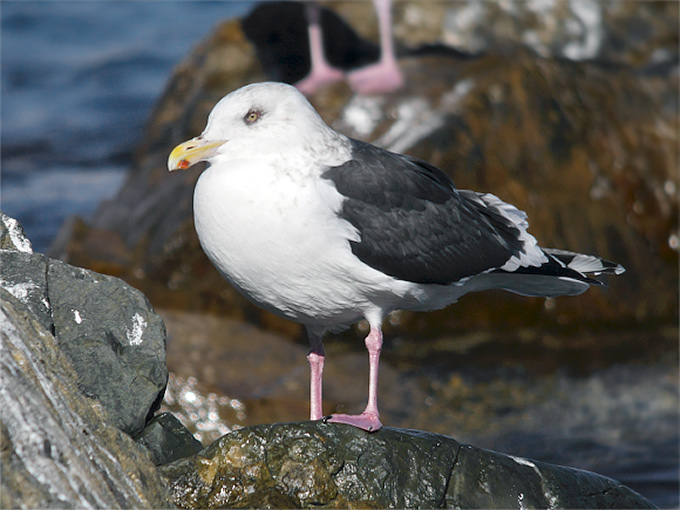
Uiryeong, December 27
Today was spent almost entirely above 600 meters. Although it was sunny day, temperatures were low at around -4°C. The wind was at times very strong and icy. Still, birds were active throughout most of the day. Dusky Thrush were most numerous (100+), with several large flocks b> moving throughout the mountain range. Naumann’s Thrush were mixed in, some wearing a very attractive plumage, but in low numbers. We were very pleased to welcome the arrival of two of our favorite wintering species, Long-tailed Rosefinch (3+) and Pallas’s Rosefinch (5+). Other species observed include Red Crossbill (2), Eurasian Nuthatch (2), Siberian Accentor (7+), Brambling (45+), and Olive-backed Pipit (10+). The only raptors b> were a lone Cinereous Vulture and a single Eurasian Sparrowhawk.

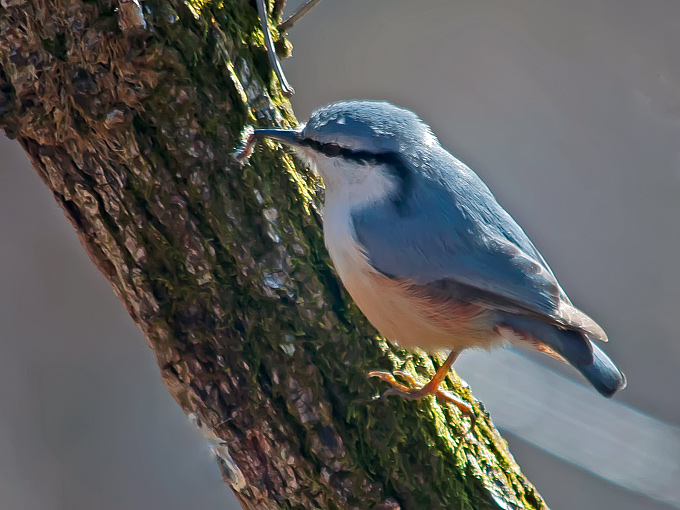
Mokpo, December 27
The end of the stream between Samhyang and Yeongsan bridge, a tidal stretch of about 100m, was again quite birdy all morning until the low tide made all ducks move out: Eastern Spot-billed Duck 9, Mallard 7 and one presumed hybrid of Mallard and Eastern Spot-billed Duck, Gadwall 11, Little Grebe 6, Eurasian Coot 1, Red-brested Merganser 1, Black-headed Gull 28, Taimyr Gull 1, Grey Heron 1, Little Egret 1, White Wagtail 4.




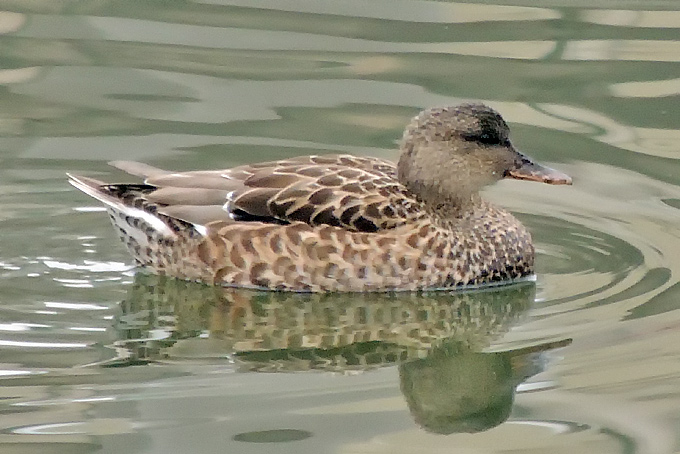


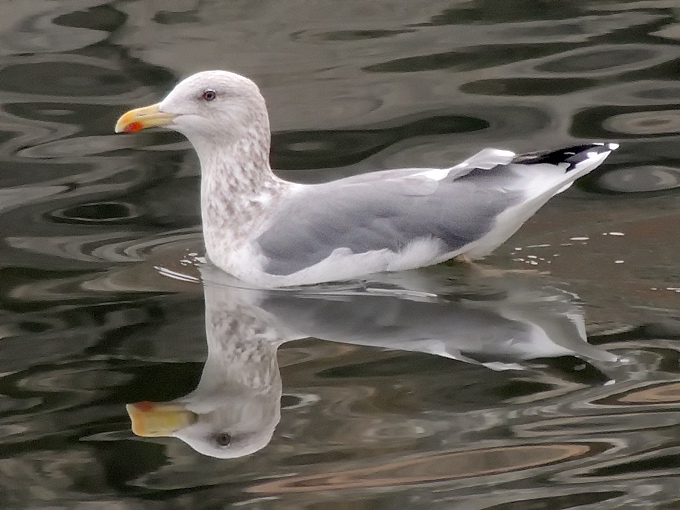
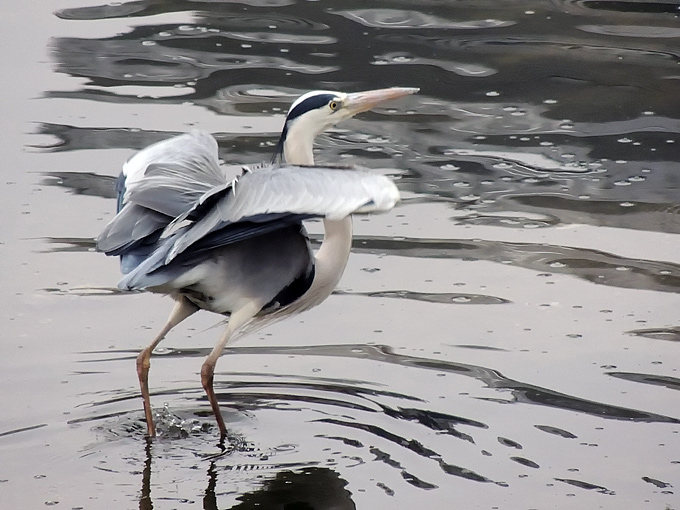

Igidae, Busan, December 24
In mild conditions (with an overnight low of -1C and a high of +7C, though with traces of snow still lying from a light dusting a couple of days earlier), a couple of hours in Igidae proved fairly “birdy”. In the small area that was visited towards the north of the park, there were several flocks of Yellow-throated Bunting, 40+ Brambling and at least three Rustic and one Black-faced Bunting. Other species of interest included a stunning male Eurasian Sparrowhawk harassing a Vinous-throated Parrotbill flock as they tried to go to roost; three Pale Thrush; and on the sea five Common Pochard and at least 10 Ancient Murrelet (the first here this winter).



Cheolwon, December 21 – 22
With great thanks to Mr. Lee Eunseong, one of the birding club senior, we could get a chance to birding at Cheolwon and nearby civilian control zone. Although the far less species and numbers of expected finches, it was still fantastic birding with quite good numbers of Red-crowned Cranes and White-naped Cranes in families. The whole birding was followed by delicious food, and ended by numerous Cinerous Vultures feeding those buchery by-products placed by adjacent Slaughterhouse.
Species List:
- Northern Pintail Anas acuta
- Eurasian Teal Anas crecca
- Smew Mergellus albellus
- Common Merganser Mergus merganser
- Little Grebe Tachybaptus ruficollis
- Great Crested Grebe Podiceps cri
- Cinereous Vulture Aegypius monachus. Over 100 individuals gathered nearby farmlands of a restaurant, must be carried by butchery by-products spread over those farms.
- Eurasian Sparrowhawk Accipiter nisus
- Northern Goshawk Accipiter gentilis
- White-tailed Eagle Haliaeetus albicilla. One juvenile found among the Cinereous Vulture flocks.
- Eastern Buzzard Buteo japonicus
- Common Kestrel Falco tinnunculus
- Merlin Falco columbarius. 2 male adults observed in a close distance each other.
- White-naped Crane Grus vipio
- Red-crowned Crane Grus japonensis. over 16 families, 42 individuals observed.
- Oriental Turtle Dove Streptopelia orientalis
- Japanese Pygmy Woodpecker Dendrocopos kizuki
- Bull-headed Shrike Lanius bucephalus
- Chinese Grey Shrike Lanius sphenocercus
- Eurasian Jay Garrulus glandarius
- Azure-winged Magpie Cyanopica cyanus
- Eurasian Magpie Pica pica
- Large-billed Crow Corvus macrorhynchos
- Marsh Tit Poecile palustris
- Varied Tit Poecile varius
- Coal Tit Periparus ater
- Eastern Great Tit Parus minor
- Brown-eared Bulbul Hypsipetes amaurotis
- Long-tailed Tit Aegithalos caudatus
- Vinous-throated Parrotbill Sinosuthera webbiana
- Daurian Redstart Phoenicurus auroreus
- Eurasian Tree Sparrow Passer montanus
- Siberian Accentor Prunella montanella. At least 10 birds seen and heard.
- Brambling Fringilla montifringilla
- Hawfinch Coccothraustes coccothraustes
- Long-tailed Rosefinch Uragus sibiricus
- Grey-capped Greenfinch Carduelis sinica
- Meadow Bunting Emberiza cioides
- Rustic Bunting Emberiza rustica
- Yellow-throated Bunting Emberiza elegans
- Pallas’s Reed bunting Emberiza pallasi
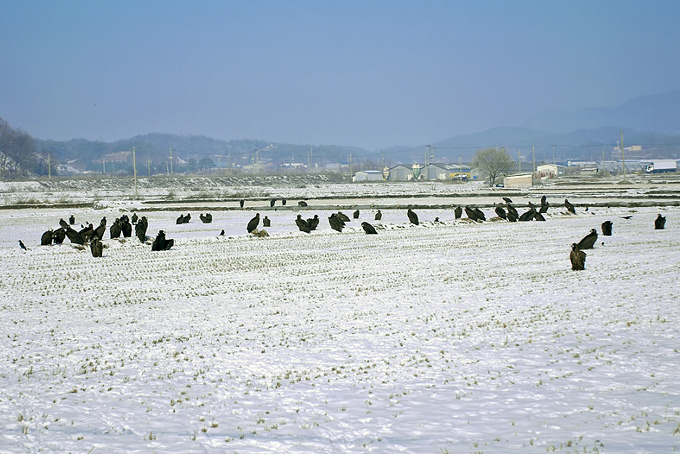



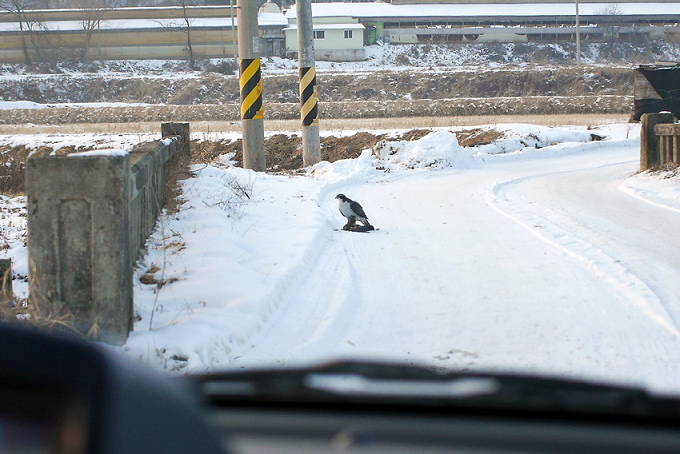
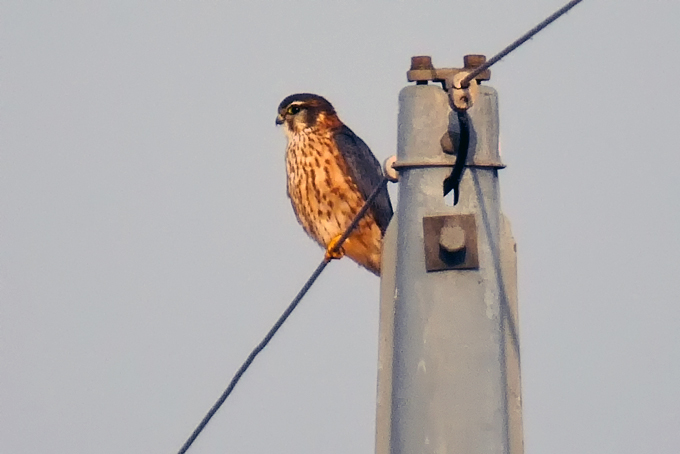

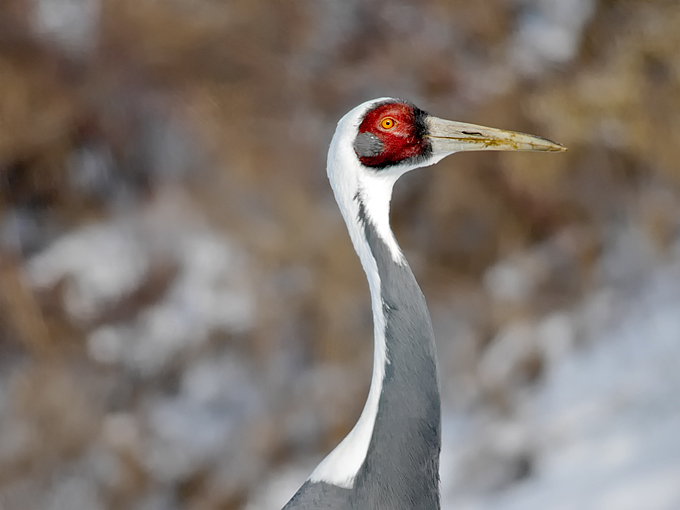
© Ha Jung Mun

Mokpo Yeongsan barrage seaside, December 17
The early cloudy and grey afternoon showed c. 500 Black-headed Gull, 21 Great Cormorant, 11 Eastern Spot-billed Duck, 7 Red-breasted Merganser very distant and 3 Little Grebe very close on the open water in front of the barrage
On the stream towards the barrage c. 20 more Black-headed Gull, 11 Mallard, 4 Little Grebe, 1 Little Egret and 1 Great Crested Grebe were seen on the water while a flock of c. 40 Gray-capped Greenfinch came on a tree nearby and a White Wagtail flew over.


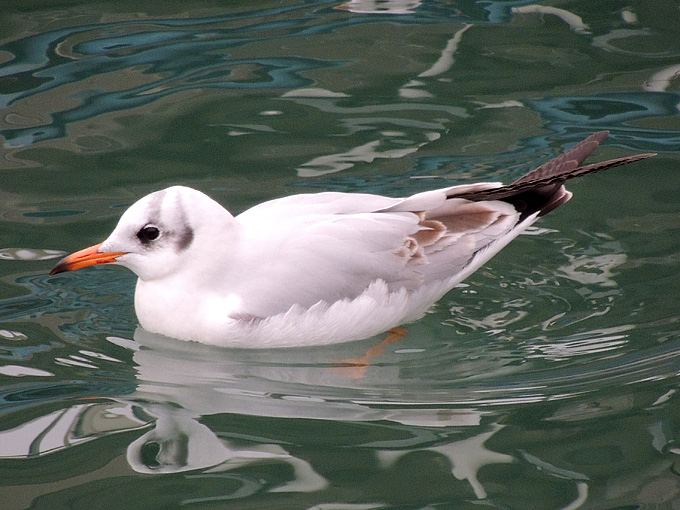






Various Sites, December 12 - 16
A five day birding trip full of discussion and good spirits to several key winter birding sites (Yeongjong on 12th; East Seoul and the National Artboretum on 13th; Cheorwon, Han-Imjin and Hwaseong on 14th; Geum Estuary and Geum River on 15th; and Suncheon Bay, SE River and Joonam Reservoirs on 16th). The weather included snow and sunshine and temperatures that ranged from a minimum minus19C (dawn at Cheorwon) to a more balmy plus 5C (at Joonam), with weather and baggage issues restricting time spent at some sites to only an hour or two. In total, at least 120 species were recorded, including several colourful favourites (e.g. Mandarin Duck, Far Eastern Oystercatcher and Azure-winged Magpie) and the following stand-out highlights:
- Swan Goose Anser cygnoides. A flock of 33 was at the Geum (including a bird with a bleached-out neck collar) and one was at Joonam.
- Lesser White-fronted Goose Anser erythropus. Two at Joonam.
- Baikal Teal Anas formosa. Two at Hwaseong, 9,000 on the Geum River and a handful at Joonam.
- Scaly-sided Merganser Mergus squamatus. Eight were well-watched on the SE River, including one fully adult male.
- Cinereous Vulture Aegypius monachus. Five over the arboretum (including one oddly pale individual) and a dozen or so at Cheorwon were the only ones encountered. Of great concern, there appears to be no feeding this winter in Cheorwon due to concerns over Avian Influenza. It would be most useful to receive reports of vultures throughout the country this winter to see how this is impacting their survival.
- Rough-legged Buzzard Buteo lagopus. One at Suncheon Bay .
- White-naped Crane Grus vipio. Probably 25 in Cheorwon and 30+ at Joonam.
- Red-crowned Crane Grus japonensis. A total of 15 or so in the snow at Cheorwon.
- Hooded Crane Grus monacha. A flock of 460 (including at least a dozen obvious hybrids) were feeding on grain provided through the artificial feeding program at Suncheon Bay; another 15 or so were spread through the rice-fields. One was also at Joonam.
- Solitary Snipe Gallinago solitaria. Two were at the National Arboretum.
- Far Eastern Curlew Numenius madagascariensis. One, a scarce over-winterer, was with a flock of 680 Eurasian Curlew at the Geum.
- Saunders’s Gull Chroicocephalus saundersi. A flock of 290 were in the Outer Geum, with 100 + also at the Geum Barrage.
- Relict Gull Ichthyaetus relictus. A First-winter was in among a large flock of feeding gulls at the Geum.
- Eurasian Eagle-Owl Bubo bubo. One was sitting cat-like on a rice-field bund at Hwaseong.
- Grey-capped Pygmy Woodpecker Dendrocopos canicapillus. Two at the National Arboretum included at least one male.
- Yellow-bellied Tit Periparus venustulus. One or two heard at the National Arboretum.
- Red-billed Starling Spodiopsar sericeus, One was heard in among a flock of White-cheeked Starling at Joonam.
- Naumann’s Thrush Turdus naumanni. At least 40 at the National Arboretum and several groups at other northern sites suggest that this is a good winter for this species compared with most previous years.
- Water Pipit Anthus spinoletta. One in flight, calling, at Hwaseong.







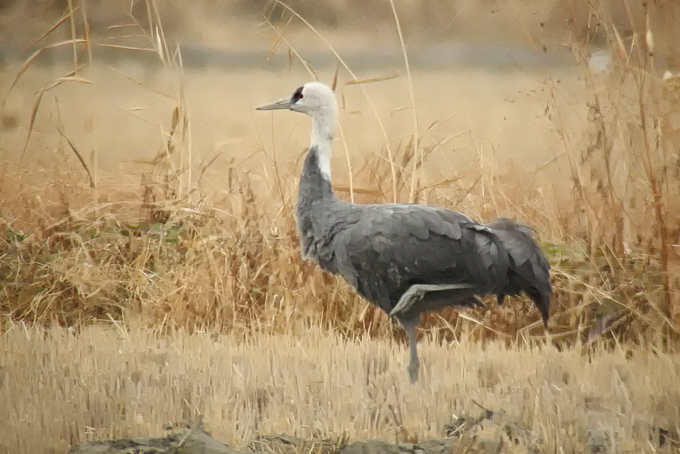




Eungbong, December 16
I made an afternoon visit to the stream at Eungbong, just above the confluence with the Han River. Weather was cool and cloudy. For once, it was good to be at some distance from the birds — the old walkway has been fenced off, and pedestrians and cyclists are farther away from the water. Even though some sort of construction is going on in parts of this new buffer zone, the number of birds on the water was impressive — a conservative 600 Common Pochards, about 100 Tufted Ducks (many more suspected far off on the Han), c. 50 Eastern Spot-billed Ducks, c. 25 Northern Pintails, scattered Gadwalls and Mallards, 8 Ruddy Shelducks, and a very encouraging 70+ Mandarin Ducks. White Wagtails, Vinous-throated Parrotbills and a Daurian Redstart called in the background.

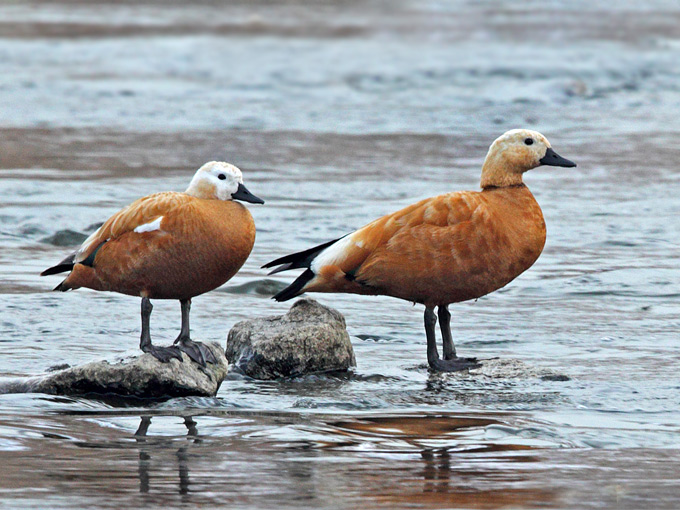
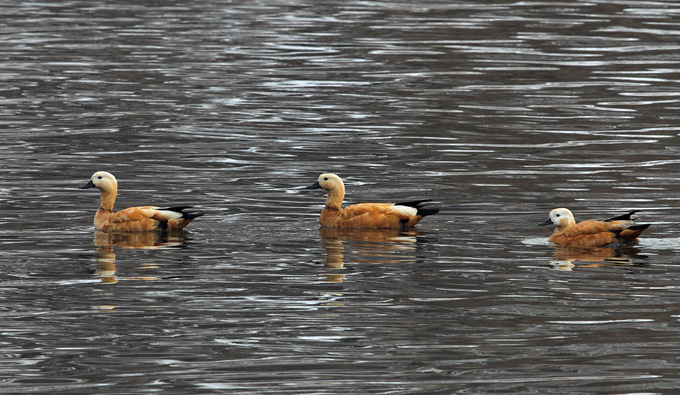


Gwangneung: National Arboretum, December 11
A visit to the arboretum on a cold snowy morning in search of winter finches found only Bramblings (a conservative 200), Hawfinches (3) and Siskins (12). Other birds included a Northern Goshawk, a Eurasian Sparrowhawk, 3 Eastern Buzzards and 3 Cinereous Vultures, a Solitary Snipe, several Great Tits, Coal Tits, Varied Tits and a Long-tailed Tit (heard calling). I did see one Yellow-bellied Tit—being carried off by a Bull-headed Shrike. Woodpeckers were represented by 2 each of Grey-capped Pygmy and Great Spotted, and buntings by small numbers of Yellow-throated and Rustic. A few Goldcrests, a Eurasian Nuthatch, a few Eurasian Jays, several Naumann’s Thrushes, a Red-flanked Bluetail and a Daurian Redstart round out the colorful band.
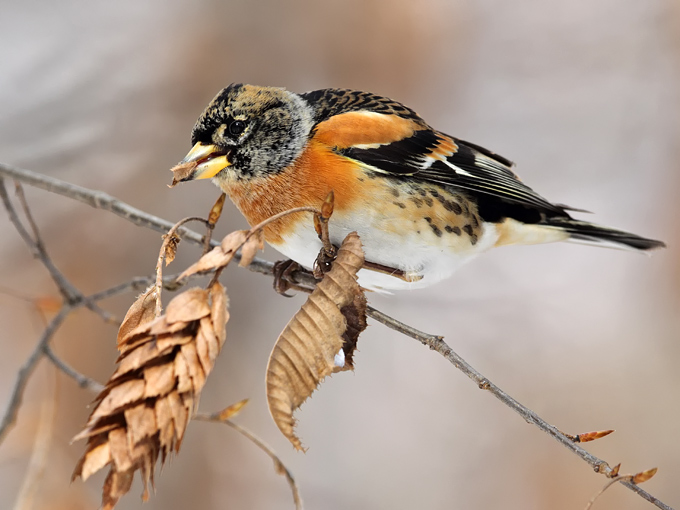

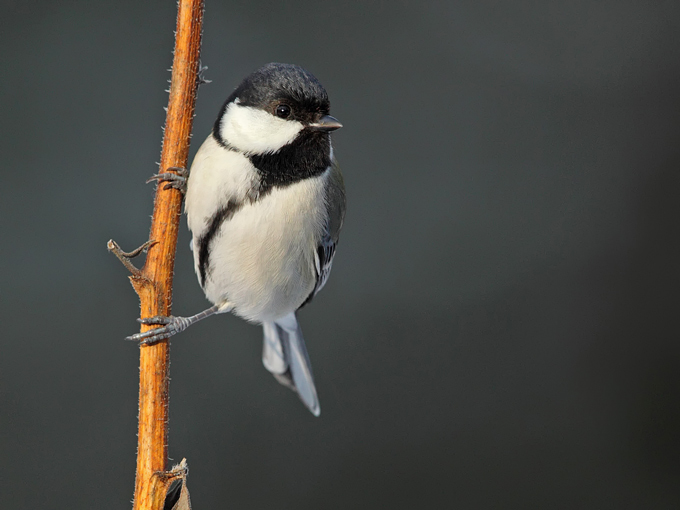

Stream near Naju, December 9
As part of the continuing Scaly-sided Merganser survey, we visited a pretty stretch of river near Naju and found an encouraging 13 Scaly-sided Mergansers, an equivalent number of Common Mergansers, 82 Eastern Spot-billed Ducks, 12 Common Teal and a surprising 8 Baikal Teal, 8 Little Grebes, 2 Far-eastern Buzzards, 1 Common Snipe, 1 Common Sandpiper,1 Eurasian Sparrowhawk, several Grey Herons and Great Egrets, 1 Common Kestrel and 7 Azure-winged Magpies.
We also found some construction in progress along the banks of the stream that seems to transform the banks together with the islands in the river into a park like area.
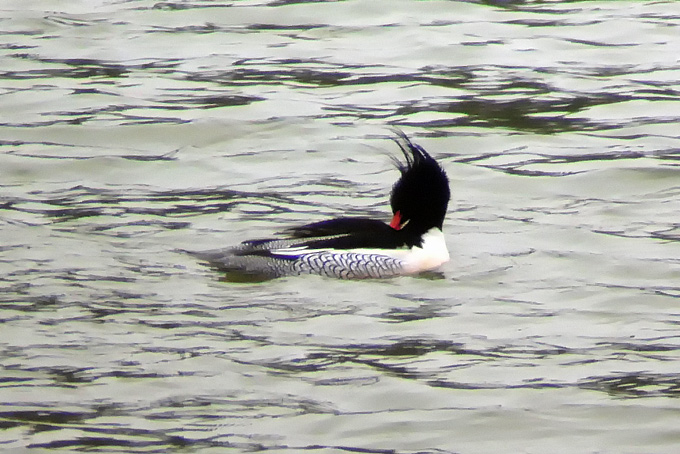



© Andreas Kim


Gangjin Bay and Gocheonnam Lake, December 8
A group of nine eager participants searched Gangjin Bay and Haenam County for waterfowl and raptors. Highlights included c. 350-400 Whooper Swans at the Bay, two Black-faced Spoonbill, a variety of passerines including Chinese Penduline Tit and Common Reed Bunting, with smaller numbers of buntings like Black-faced, Yellow-throated, and Meadow Bunting.
A thorough search of Gocheonnam Lake in Haenam County yielded c. 200-300 Greater White-fronted Geese with Tundra Bean Geese mixed in. The lake contained large numbers of Eurasian Wigeon and Eastern Spot-billed Duck.
A special thank you goes to Prof. Robin Newlin, for leading a wonderful outing (and for his interesting GIC Talk in Gwangju the day before). Transportation (and a wonderful lunch) was provided by Pedro Kim.
A complete list of our sightings (53 species) for the day is below.
- Tundra Bean Goose Anser serrirostris
- Greater White-fronted Goose Anser albifrons; included a heavily-barred individual, likely of the “Siberian” A. a. albifrons subspecies
- Lesser White-fronted Goose Anser erythopus; presumed three found hiding in a large flock of greater white-fronted geese
- Whooper Swan Cygnus cygnus
- Gadwall Anas strepera
- Eurasian Wigeon Anas penelope
- Mallard Anas platyrhynchos
- Eastern Spot-billed Duck Anas zonorhyncha
- Northern Shoveler Anas clypeata
- Common Teal Anas crecca
- Common Pochard Aythya ferina
- Tufted Duck Aythya fuligula
- Common Merganser Mergus merganser
- Red-breasted Merganser Mergus serrator
- Little Grebe Tachybaptus ruficollis
- Great Crested Grebe Podiceps cristatus
- Eurasian Spoonbill Platalea leucorodia
- Black-faced Spoonbill Platalea leucorodia
- Grey Heron Ardea cinerea
- Eastern Great Egret Ardea modesta
- Little Egret Egretta garzetta
- Great Cormorant Phalacrocorax carbo
- Eurasian Sparrowhawk Accipiter nisus
- Hen Harrier Circus cyaneus
- Eastern Buzzard Buteo japonicus
- Common Kestrel Falco tinnunculus
- Eurasian Coot Fulica ater
- Common Sandpiper Actitis hyperleucos
- Dunlin Calidris alpina
- Black-headed Gull Chroicocephalus ridibundus
- Vega Gull Larus vegae
- Oriental Turtle Dove Streptopelia orientalis
- Bull-headed Shrike Lanius bucephalus
- Azure-winged Magpie Cyanopica cyanus
- Eurasian Magpie Pica pica
- Large-billed Crow Corvus macrorhynchos
- Eastern Great Tit Parus minor
- Chinese Penduline Tit Remiz consobrinus
- Eurasian Skylark Alauda arvensis
- Brown-eared Bulbul Hypsipetes amaurotis
- Long-tailed Tit Aegithalos caudacutus
- Vinous-throated Parrotbill Sinosuthora webbiana
- White-cheeked Starling Spodipsar cineraceus
- Daurian Redstart Phoenicurus auroreus
- Eurasian Tree Sparrow Passer montanus
- Grey Wagtail Motacilla cinerea
- White Wagtail Motacilla alba
- Olive-backed Pipit Anthus hodgsoni
- Buff-bellied Pipit Anthus rubescens
- Grey-capped Greenfinch Chloris sinica
- Meadow Bunting Emberiza cioides
- Yellow-throated Bunting Emberiza elegans
- Black-faced Bunting Emberiza spodocephala
- Common Reed Bunting Emberiza schoeniclus
- Unidentified Crane (?); a large dark-colored bird was observed briefly in flight; neck was extended during flight, with slight bend in the neck. The bird disappeared, and a careful search of the surrounding field only revealed a Grey Heron. The group was split on the true identity of the bird, with some believing Grey Heron and others believing a Crane on unknown species.

presumed Lesser White-fronted Goose Anser erythropus (three front middle), © Andreas Kim







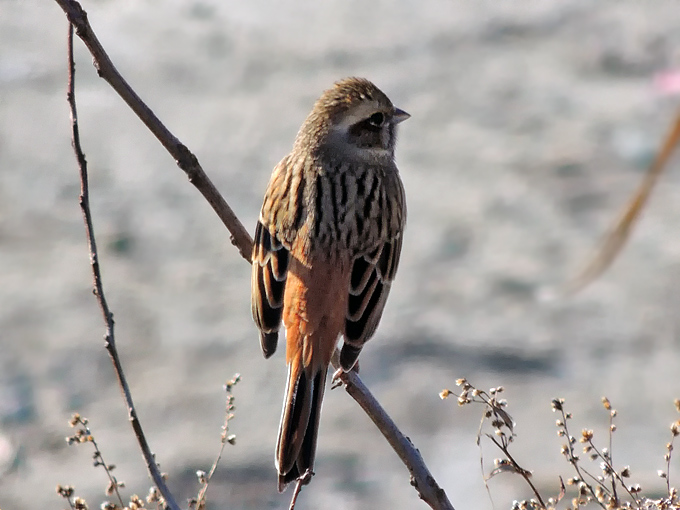

Igidae Busan, December 5
A four-hour walk from the Birds Korea office through a very dry and rather disturbed Igidae to SK View, covering most of the same areas e.g. in mid-April (see bird news archives).. The weather was mild (max 13-14C) with light winds and sunny periods. Highlights among the 43 species recorded were three Yellow-bellied Tit and several small flocks of migrating Baikal Teal. The low point was having to see and hear yet more habitat “improvement” – the new green deal of the past few years – with the open ground at SK View under the bulldozers – again.
A full list follows:
- Baikal Teal Anas formosa. A total of 320 (flocks of 60, 30, 70, 40, 120) were seen. These included 60 flying overland towards the southwest; and the remainder in flocks heading south low over the water during 30 minutes of observation just before and at dusk. One of these flocks rested on the sea, before being flushed by two Finless Porpoise. This is my first record of this species at Igidae and my first time to see groups in obvious migration over the sea.
- Great Crested Grebe Podiceps cristatus. One on the sea.
- Grey Heron Ardea cinerea. Six were roosting at the base of the Gwangali Bridge.
- Temminck’s Cormorant Phalacrocorax capillatus. Thirty were roosting on Gwangali Bridge (close enough for specific identification) and at least 1200 were at the roost on Oryuk Islet at 1700hrs. It is not clear if this roost also contained Great Cormorant that feed in the Nakdong Estuary.
- Black Kite Milvus migrans. One over SK View.
- Black-headed Gull Chroicocephalus ridibundus. Around 30 were off Igidae.
- Black-tailed Gull Larus crassirostris. Around 10 were off Igidae, and 20 off SK View.
- Common Gull Larus canus. One off SK View.
- Vega Gull Larus vegae. At least 85 passed south off Oryuk Islet in the evening during only 30 minutes of observation.
- Slaty-backed Gull Larus schistisagus. Three were off SK View.
- Oriental Turtle Dove Streptopelia orientalis. A total of ten, including one fresh-fringed bird of the year.
- Feral Pigeon Columba livia var. "domestica". A total of six.
- Japanese Pygmy Woodpecker Dendrocopos kizuki. A total of 11 seen or heard.
- White-backed Woodpecker Dendrocopos leucotos. One well-watched.
- Great Spotted Woodpecker Dendrocopos major At least two seen and one or more heard.
- Bull-headed Shrike Lanius bucephalus. Three heard – all after sunset.
- Eurasian Jay Garrulus glandarius. Three.
- Eurasian Magpie Pica pica. At least 39, most toward the north end of Igidae.
- Large-billed Crow Corvus macrorhynchos At least 11.
- Marsh Tit Poecile palustris. One heard.
- Varied Tit Poecile varius. A total of six seen or heard (those that were seen were all cleanly “blue and orange”).
- Coal Tit Periparus ater. Eight heard or seen.
- Yellow-bellied Tit Periparus venustulus. Three: two in the same area as on the 2nd; and one towards the main gully.
- Eastern Great Tit Parus minor. A total of 26 seen or heard.
- Brown-eared Bulbul Hypsipetes amaurotis. A total of 29 seen or heard.
- Japanese Bush Warbler Horornis diphone. One heard.
- Long-tailed Tit Aegithalos caudatus. At least 40 were at the southern end of Igidae. All those seen were magnus.
- Vinous-throated Parrotbill Sinosuthera webbiana. Remarkably scarce – with only 35, all at the southern end.
- Japanese White-eye Zosterops japonicus. Seven seen or heard.
- Goldcrest Regulus regulus. Present in decent numbers, with at least 32 heard or seen.
- Eurasian Wren Troglodytes troglodytes. Four.
- Pale Thrush Turdus pallidus. Two heard near the main gully.
- Daurian Redstart Phoenicurus auroreus. Nine heard or seen.
- Blue Rock Thrush Monticola solitarius. Two males.
- Eurasian Tree Sparrow Passer montanus. A total of only six.
- White Wagtail Motacilla alba. One heard.
- Olive-backed Pipit Anthus hodgsoni. Five.
- Buff-bellied Pipit Anthus rubescens. Three near SK View.
- Brambling Fringilla montifringilla. Fifteen.
- Grey-capped Greenfinch Chloris sinica. Two.
- Eurasian Siskin Spinus spinus. Five.
- Rustic Bunting Emberiza rustica. One.
- Yellow-throated Bunting Emberiza elegans. A total of 185, making it by far the commonest landbird recorded on this day.



Northeast River, December 3
A morning visit to a small stretch of Bukhangang, with mist giving way to mild early winter sunshine. On the river, 12 Common Mergansers, 3 Common Goldeneyes, a Grey Heron, 5 Little Grebes and about 20 fly-over Eastern Spot-billed Ducks. Also above, an Eastern Buzzard. On and around the rocks: 2 Brown Dippers and 2 Japanese Wagtails. In the brushy verge, a few Yellow-throated Buntings and a pair of Great Tits.


Busan, December 2
A two-hour walk near the Birds Korea office in east Busan provided several interesting encounters…The first was a squid sp., swimming at the surface in a small harbour in wide arcs. With a body probably a metre in length, this animal swam out and then repeatedly back towards the seawall and tetrapods, attracting the attention of several onlookers (a few of whom were wielding sticks). Knowing very little about this species group, it would be great to learn – if possible – which species this is - and perhaps some possible reasons for its disorientated behaviour. Any ideas?
Twenty minutes later, the next highlight was hearing then seeing two or three First Calendar-year Yellow-bellied Tit. This is only probably the third confirmed record in Igidae (with previous records in autumn 2012, during large movements of other tits). Several were also seen near Jinju (100km to the west) by MF the same day. And, of course, this autumn there were multiple records of small flocks on offshore islands and also inland (at the National Arboretum in Seoul). Also in Igidae, in the small part of the main park that was checked, most noteworthy were 20 Goldcrest, several small flocks of Yellow-throated Bunting, Brambling and Eurasian Siskin, two White-backed Woodpecker and at least a dozen Red Squirrel.


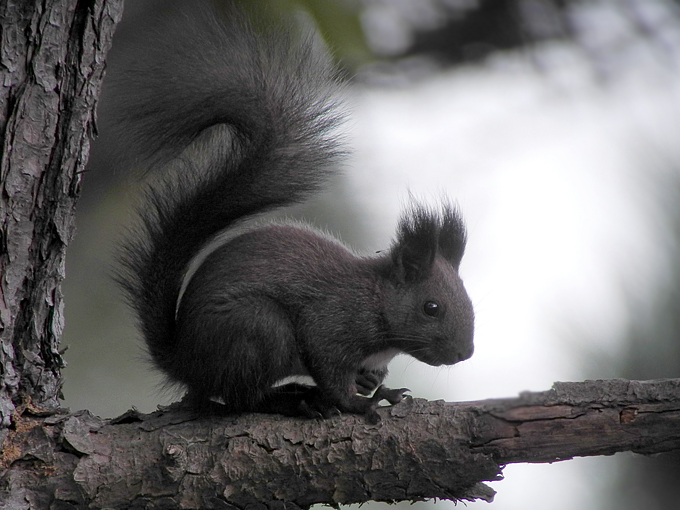
Jinju, December 2
A sunny afternoon walk in nearby woods led to an area of the track where I always see a variety of tits. This time, however, I was surprised to see bright yellow, and there, showing some curiosity from the mid-level branches, were at least three juvenile Yellow-bellied Tits. I watched and photographed them for over six minutes, and then they went on their way. It was exciting to see such rare visitors, especially as this was a first for me.

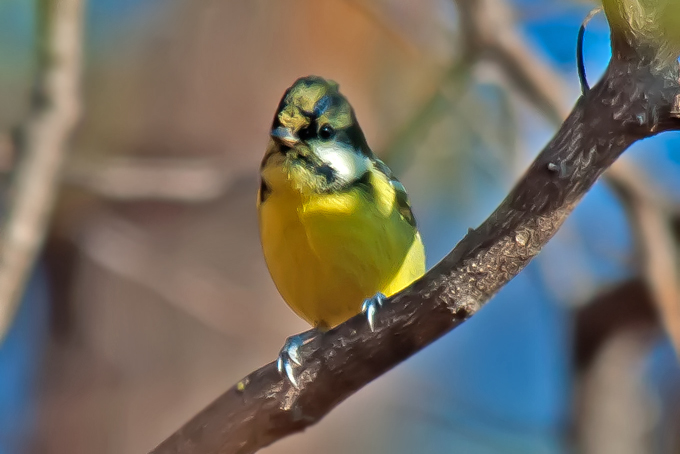
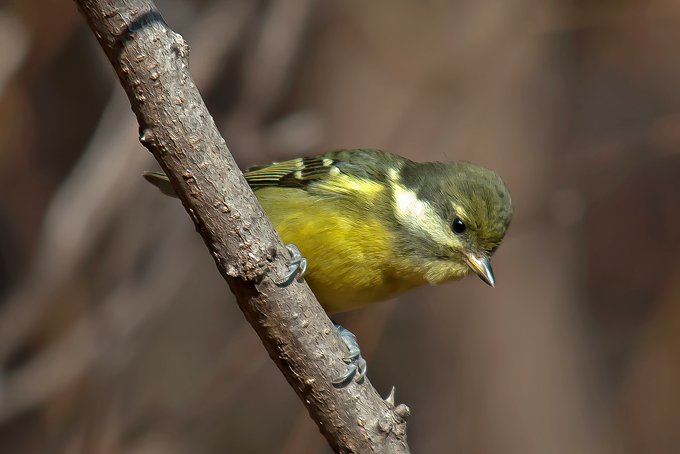
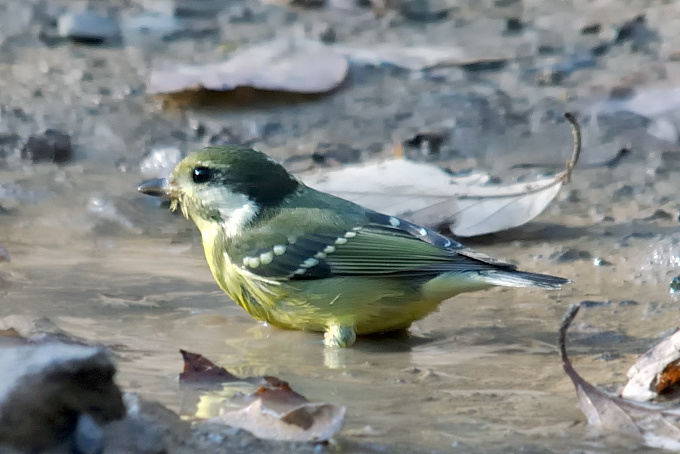


Cheolweon, November 30 - December 1
Many thanks to Dr. Jung Jiseok and Miss Han Gasun of the Border Peace School for all sorts of help and hospitality. Clear weather and relative warmth in Cheolweon; patchy snow on the ground and thin ice on the larger streams and ponds. Highlights from the afternoon of Nov. 30: about 100 White-naped Cranes and 30 Red-crowned Cranes, mostly in small “family groups” of 3 or 4. One brief Upland Buzzard and a few slow-circling Eastern Buzzards. Even slower, 4 Cinereous Vultures. Also 2 Common Kestrels and a Eurasian Sparrowhawk. Several Common Pheasants. One distant skein of Bean Geese and a few flocks (c.500 and 200 birds) of White-fronted Geese. On So-i-San, several Great Tits, 3 Yellow-throated Buntings, a Eurasian Nuthatch, and a very welcome male and female Pallas’ Rosefinch. Also from the car—a fast drive-by/fly-by flock over the fields of likely (from structure and flight) Lapland Longspurs—at least 100.
The morning of the 1st dawned very foggy: rising temperatures meeting snow and ice. A stop at the heavily shrouded lake hinted at many hundreds of geese on the water, Beans and White-fronts both; about 60 Mallards swam within sight and a single Whooper Swan flew out of the murk. Later, the sun rose and the fog dissipated; we spent the rest of the morning watching cranes (with probably 50+ Red-crowns) and crane society, wonderfully complex and cooperative—skylarks calling overhead.




Birds Korea 1108 Ho, 3 Dong, Samick Tower Apt., 148-22, Namcheon-Dong, Su-Young-Gu
Busan, 618-762 Republic of Korea





